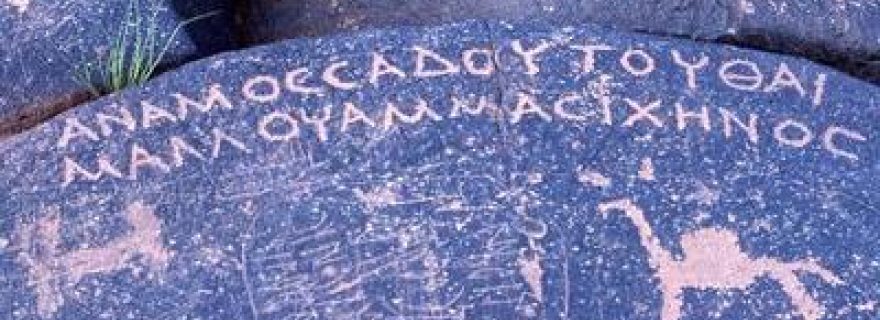Arabian Epigraphic Notes, http://arabianepigraphicnotes.org
December 2015 saw the formal launch of the Journal Arabian Epigraphic Notes (http://arabianepigraphicnotes.org/) during the LUCIS-LeiCenSAA Conference “Arabian Archeology in the 21st Century” .
Author: Birte Kristiansen, Subject librarian Middle East and the Islamic world, b.kristiansen@library.leidenuniv.nl
December 2015 saw the formal launch of the Journal Arabian Epigraphic Notes
(http://arabianepigraphicnotes.org/) during the LUCIS-LeiCenSAA Conference “Arabian Archeology in the 21st Century” .
The journal is an initiative of the Leiden Center for the Study of Ancient Arabia and has been created in close cooperation with Leiden University Libraries. The need for ‘their own’ journal had been felt for several years in the quickly developing discipline of Arabian Epigraphy and several publishers showed interest to set up this journal with an impressive editorial board already in place. However, the LeiCenSAA had a very strong wish to publish Open Access, without Article Processing Charges for the author, and ensuring quick publication after peer-review, a combination that proved hard to find. That is why the Editor-in-chief, Ahmad al-Jallad, changed his approach and decided to set it up himself in cooperation with the library and Academia.
Leiden University Libraries is taking on the responsibility for the long-term storage of the articles through the institutional repository. Academia developed, especially for this project, a closed forum that enables all those who are invited to peer-review to simultaneously comment and discuss the paper that is on review. After a set amount of days (usually about twenty) the review closes and all the comments are anonymized and sent back to the author. As soon as the paper is ready it is published. So instead of sending out the paper to one or two peer-reviewers it is now sent out to a whole group of reviewers, who can each of them concentrate on their own expertise even if that is sometimes only a short passage. Considering the very broad multidisciplinary knowledge that is necessary to move this field forward on the crossroad of archaeology, Semitic languages, Arabic, Greek, linguistics and history, this approach really enhances the progress of this discipline.
At the end of each year the ‘ volume’, consisting of all the articles published during that year, closes and a new volume opens up for the following year. Though the role of the library in this project is modest, it has proved vital because long-term preservation and accessibility as well as persistent identifiers (in the form of handles) are very important for this initiative to succeed. Moreover the expertise present at the library concerning Open Access, findability, metadata and preservation helped shaping this innovative new way of publishing.


